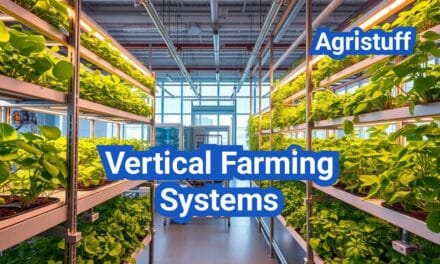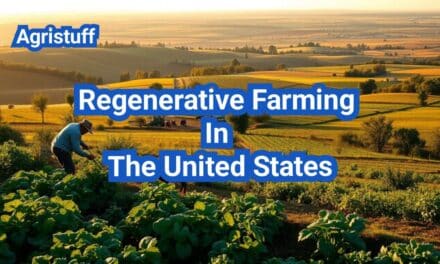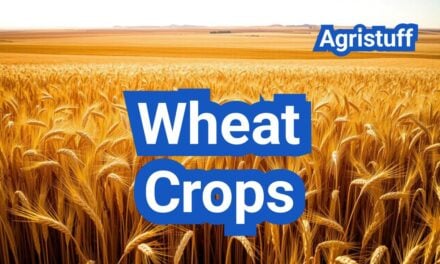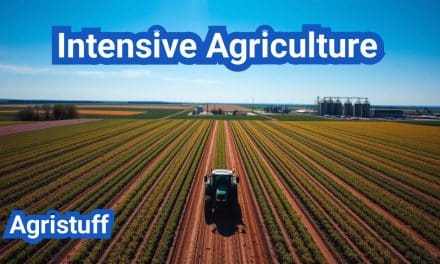Agriculture is the backbone of human civilization, encompassing the cultivation of crops and the rearing of animals for food, fiber, and other products. At its core, agriculture involves a broad spectrum of activities, from production and processing to distribution.
The Department of Agriculture plays a crucial role in regulating and supporting this vital sector, ensuring that agricultural practices are sustainable and meet the demands of a growing population. Understanding what is agriculture and its significance is essential for appreciating its impact on our daily lives and the economy.
Key Takeaways
- Agriculture is fundamental to human survival, providing food and other essential products.
- The agriculture department oversees the sector, ensuring sustainable practices.
- Agriculture encompasses a wide range of activities, including production and distribution.
- The core definition of agriculture involves cultivating crops and rearing animals.
- Agriculture has a significant economic impact, contributing to the GDP and employment.
What Is Agriculture: Definition and Importance
Agriculture is a multifaceted field that encompasses various aspects of science, technology, and engineering to produce the food, clothing, and other products we rely on daily. It involves the cultivation of crops, the raising of livestock, and the application of genetic improvements to enhance yields and disease resistance.
Core Definition of Agriculture
Agriculture is fundamentally about producing food, fiber, and other products through farming and livestock management. It incorporates genetics work to improve seeds and animals, ensuring higher quality and quantity of agricultural outputs. The core definition revolves around the effective use of land, labor, and resources to meet human needs.
The Fundamental Role of Agriculture in Society
Agriculture plays a vital role in society, providing not just food but also employment opportunities in rural areas. It is crucial for food security, ensuring that communities have access to nutritious food. Moreover, agriculture contributes to the preservation of cultural heritage and traditional farming practices.
Economic Impact of Agriculture
The economic impact of agriculture is significant, as it contributes substantially to the GDP of many countries. Agricultural trade is a major component of international commerce, with countries exporting and importing various agricultural products. The sector also supports agricultural communities by providing livelihoods and stimulating local economies.
The Historical Evolution of Agriculture

The evolution of agriculture is a story of innovation and adaptation. From primitive tools to sophisticated machinery, agriculture has undergone significant transformations over the centuries.
The Agricultural Revolution
The Agricultural Revolution marked a pivotal shift from nomadic hunter-gatherer societies to settled agricultural communities. This period, which occurred around 10,000 years ago, allowed for the domestication of plants and animals, leading to more stable food sources and the growth of civilizations. The impact of this revolution was profound, enabling population growth and the development of complex societies.
Agricultural Innovations Through the Ages
Throughout history, agriculture has seen numerous innovations that have increased efficiency and productivity. The invention of the plow, for example, allowed for more effective tilling of the soil, while the development of irrigation systems enabled farming in areas previously unsuitable for cultivation. Crop rotation and other farming techniques further contributed to agricultural advancements.
| Innovation | Impact | Period |
|---|---|---|
| Plow | Improved soil tilling | Ancient Era |
| Irrigation Systems | Enabled farming in arid areas | Ancient Civilizations |
| Crop Rotation | Enhanced soil fertility | Middle Ages |
Modern Agricultural Transformation
In recent decades, agriculture has experienced a technological revolution, with the introduction of precision farming techniques, genetically modified crops, and advanced machinery. These innovations have significantly increased crop yields and reduced labor costs.
As the global population continues to grow, the importance of modern agricultural practices cannot be overstated. By understanding the historical evolution of agriculture, we can better appreciate the complexities and challenges of feeding a global population sustainably.
Understanding Different Types of Agriculture
The diversity in agricultural practices is a response to the varied demands and challenges faced by farmers worldwide. Farms can be categorized into different types based on their practices, scale, and purpose. Understanding these different types is crucial for appreciating the complexity and versatility of agriculture.
Conventional Agriculture
Conventional agriculture is characterized by its focus on high yields and efficiency. It often involves the use of synthetic fertilizers, pesticides, and mechanized farming techniques. This type of agriculture is prevalent in many parts of the world and is known for its ability to produce large quantities of food. However, it also faces criticism for its environmental impact, including soil degradation and water pollution.
Subsistence Agriculture
Subsistence agriculture is primarily practiced to meet the food needs of the farmer’s family or local community. It is common in rural areas where farmers grow crops and raise livestock mainly for consumption. This type of agriculture is crucial for food security in many developing regions. Subsistence farming is often characterized by traditional farming methods and a diverse range of crops.
Commercial Agriculture
Commercial agriculture is driven by the goal of producing crops and livestock for sale in markets. This type of farming is often large-scale and highly mechanized, focusing on a few specific crops or livestock. Commercial agriculture plays a significant role in the global food supply chain and is a key component of many countries’ economies. It requires significant investment in equipment, technology, and marketing.
Mixed Farming Systems
Mixed farming involves combining different agricultural practices, such as growing crops and raising livestock on the same farm. This approach can enhance farm productivity and sustainability by diversifying income sources and improving soil health through crop rotation. Mixed farming systems are adaptable to various environmental conditions and can contribute to more resilient farming practices.
In conclusion, understanding the different types of agriculture is essential for addressing the challenges faced by the agricultural sector. By recognizing the characteristics and contributions of conventional, subsistence, commercial, and mixed farming systems, we can better support sustainable agricultural practices.
How to Master Crop Cultivation Fundamentals

Effective crop cultivation begins with a deep understanding of fundamental farming practices. Mastering these basics is crucial for achieving high yields and maintaining soil health.
Soil Preparation and Management
Soil preparation is the foundation of successful crop cultivation. It involves testing soil composition, adjusting pH levels, and adding necessary nutrients. Proper soil management techniques, such as tilling and mulching, help maintain soil structure and fertility.
A well-prepared soil can significantly improve crop health and productivity. For instance, a study by the USDA found that soil conservation techniques can increase crop yields by up to 20%.
Seed Selection and Planting Techniques
Selecting the right seeds and employing effective planting techniques are critical for optimal crop growth. Farmers should choose seeds that are resistant to pests and diseases and suitable for their local climate.
Proper spacing and depth are also vital. Techniques such as precision planting can enhance seed germination rates and reduce waste.
Crop Rotation and Intercropping
Crop rotation and intercropping are strategies used to maintain soil health and reduce pest and disease pressure. Rotating crops can replenish soil nutrients, while intercropping can maximize land use efficiency.
| Crop Rotation Benefits | Intercropping Benefits |
|---|---|
| Improves soil fertility | Increases biodiversity |
| Reduces pest and disease pressure | Maximizes land use |
| Enhances crop yields | Improves ecosystem services |
As noted by agricultural expert, “Crop rotation is a timeless practice that has been used for centuries to maintain soil health and promote sustainable agriculture.”
“The way you manage your soil determines your crop’s potential.”
A Guide to Successful Livestock Farming
Livestock farming plays a crucial role in global food security, necessitating sustainable practices. It involves various aspects, including breed selection, nutrition management, and health care, all of which are critical for productivity and animal welfare.
Selecting the Right Livestock
Choosing the appropriate livestock breed is fundamental to successful farming. Different breeds have varying characteristics that make them more or less suitable for specific environments and production systems. Factors to consider include climate adaptability, growth rate, and disease resistance. For instance, some breeds are better suited to hot and humid climates, while others thrive in cooler temperatures.
Animal Nutrition and Health Management
Effective nutrition and health management are pivotal for maintaining the well-being of livestock and ensuring high productivity. Nutritional needs vary by species, age, and production stage, requiring tailored feeding strategies. Health management involves preventive measures such as vaccinations and parasite control, as well as prompt treatment of illnesses.
Implementing a comprehensive health program not only improves animal welfare but also enhances farm profitability by reducing morbidity and mortality rates.
Sustainable Livestock Production Practices
Sustainable livestock production is essential for environmental stewardship and long-term farm viability. Practices such as rotational grazing, manure management, and biodiversity conservation contribute to sustainability. These methods help maintain soil health, reduce greenhouse gas emissions, and protect natural resources.
By adopting sustainable practices, farmers can improve the resilience of their operations and contribute to a more environmentally friendly agricultural sector.
Sustainable Agriculture: Principles and Practices
As the global population continues to grow, sustainable agriculture emerges as a critical strategy for meeting food demands without compromising the health of our planet. This approach to farming is designed to be environmentally friendly, socially responsible, and economically viable.
Core Principles of Sustainable Agriculture
The core principles of sustainable agriculture revolve around maintaining the health of the soil, conserving water, and minimizing the use of external inputs such as synthetic fertilizers and pesticides. Crop rotation, intercropping, and organic farming are some of the key practices that embody these principles.
By adopting these methods, farmers can improve soil fertility, reduce erosion, and promote biodiversity. This not only enhances the sustainability of the farming system but also contributes to the overall health of the ecosystem.
Environmental Benefits
Sustainable agriculture offers numerous environmental benefits, including the conservation of natural resources, reduction in greenhouse gas emissions, and protection of biodiversity. Conservation tillage and cover cropping are examples of practices that help in reducing soil disturbance and promoting soil health.
| Practice | Environmental Benefit |
|---|---|
| Crop Rotation | Improves soil fertility, reduces pests and diseases |
| Organic Farming | Reduces chemical use, promotes biodiversity |
| Conservation Tillage | Reduces soil erosion, conserves water |
Economic Viability of Sustainable Farming
While the initial transition to sustainable agriculture may require significant investment, the long-term economic benefits can be substantial. Sustainable farming practices can lead to improved crop yields, reduced input costs, and access to premium markets for organic and sustainably produced products.
Furthermore, sustainable agriculture can contribute to the local economy by creating jobs and stimulating rural development. By adopting sustainable practices, farmers can also mitigate risks associated with climate change and market fluctuations.
How to Implement Organic Farming Methods

Implementing organic farming methods requires a comprehensive approach that includes certification, effective pest management, and soil fertility techniques. Organic farming is a sustainable agricultural practice that avoids the use of synthetic fertilizers and pesticides, promoting a healthier ecosystem.
Organic Certification Process
The organic certification process is a critical step for farmers transitioning to organic practices. It involves adhering to specific standards set by certifying agencies, which typically include maintaining detailed records of farming practices, avoiding the use of synthetic substances, and undergoing inspections. Certification not only provides market credibility but also ensures compliance with national and international organic standards.
Natural Pest and Disease Management
Effective natural pest and disease management is crucial for the success of organic farming. Techniques include using beneficial insects, practicing crop rotation, and applying organic pesticides derived from natural sources. Crop diversity and maintaining ecological balance are key strategies in minimizing pest and disease outbreaks.
Organic Soil Fertility Management
Maintaining soil fertility is fundamental to organic farming. This is achieved through practices such as composting, using green manure, and incorporating cover crops into the rotation. These methods enhance soil structure, increase nutrient content, and support beneficial microbial activity, leading to healthier crops and higher yields.
By adopting these organic farming methods, farmers can contribute to sustainable agriculture, improve the health of their soil, and provide consumers with high-quality, organic produce.
Regenerative Agriculture: Restoring Ecosystems

Regenerative agriculture is gaining traction as a holistic approach to farming that prioritizes ecosystem restoration. This method not only aims to reduce the environmental footprint of farming but also to enhance the overall health of the ecosystem.
Principles of Regenerative Farming
Regenerative farming is guided by several key principles, including soil conservation, diversification, and minimizing external inputs. These principles work together to create a balanced and thriving ecosystem.
By adopting practices like no-till farming and cover cropping, farmers can significantly reduce soil erosion and improve soil health.
Soil Health and Carbon Sequestration
Soil health is a critical component of regenerative agriculture. Healthy soils are more effective at sequestering carbon, reducing atmospheric CO2 levels, and mitigating climate change.
Practices for Enhancing Soil Health
- Implementing cover crops to reduce soil erosion and increase organic matter.
- Using crop rotation to promote soil fertility and structure.
- Adopting organic amendments to enhance nutrient cycling.
Steps to Implement Regenerative Practices
To implement regenerative practices, farmers should start by assessing their current farming methods and identifying areas for improvement. This may involve transitioning to no-till or reduced-till farming and integrating livestock grazing into their operations.
By taking a holistic approach to farming, regenerative agriculture offers a promising path forward for sustainable food production and ecosystem restoration.
Urban and Vertical Farming Solutions

As cities expand, urban and vertical farming offer innovative solutions to food security challenges. Urban and vertical farming involve growing crops in urban areas, often using hydroponics or aeroponics, to increase food production while minimizing environmental impact.
Urban Agriculture Fundamentals
Urban agriculture is the practice of cultivating, processing, and distributing food in or around urban areas. It encompasses a variety of techniques, including container gardening, rooftop farming, and community gardens. Urban farming not only provides fresh produce to city dwellers but also helps to reduce the carbon footprint associated with transporting food from rural areas to cities.
Vertical Farming Technologies
Vertical farming is a cutting-edge method of growing crops in vertically stacked layers, often within indoor environments. This technique utilizes hydroponics, aeroponics, or other soilless cultivation methods to optimize crop growth. Vertical farming allows for year-round production, regardless of weather conditions, and can significantly increase crop yields per square foot.
“The future of farming is not just about the quantity of food produced, but also about the quality and the sustainability of the production methods.” –
Unknown
Benefits and Challenges of Urban Farming
Urban farming offers numerous benefits, including increased food security, reduced transportation costs, and enhanced urban biodiversity. However, it also faces challenges such as high initial investment costs, energy consumption for indoor farming, and the need for specialized knowledge and technology. Despite these challenges, urban and vertical farming are gaining popularity as sustainable practices that can help meet the world’s growing food demands.
By adopting urban and vertical farming solutions, cities can become more self-sufficient in food production, contributing to a more sustainable future. As the global population continues to urbanize, the importance of these innovative farming methods will only continue to grow.
Modern Agriculture Technology and Innovation

Technological innovations are reshaping the agricultural landscape, enhancing productivity and efficiency. Modern agriculture incorporates a range of technologies, from precision farming and drones to data analytics, to improve crop yields and reduce environmental impact.
Precision Agriculture Tools
Precision agriculture involves the use of advanced technology, such as GPS, sensors, and drones, to optimize crop management. These tools enable farmers to monitor and manage their fields more effectively, reducing waste and improving productivity.
Key precision agriculture tools include:
- GPS-guided equipment for precise planting and harvesting
- Drones equipped with cameras and sensors for crop monitoring
- Soil sensors to monitor moisture and nutrient levels
Data-Driven Farming Decisions
Data analytics plays a crucial role in modern agriculture, enabling farmers to make informed decisions based on real-time data. By analyzing data from various sources, farmers can optimize irrigation, predict crop yields, and identify potential issues before they become major problems.
| Data Source | Application | Benefits |
|---|---|---|
| Weather Stations | Weather forecasting and climate monitoring | Improved irrigation management and crop protection |
| Satellite Imagery | Crop monitoring and yield prediction | Early detection of crop stress and yield optimization |
| Soil Sensors | Soil moisture and nutrient monitoring | Optimized irrigation and fertilization |
Implementing Smart Farming Systems
Smart farming systems integrate various technologies to create a more efficient and sustainable farming operation. These systems can automate tasks, monitor conditions in real-time, and provide insights to improve decision-making.
The benefits of smart farming systems include:
- Increased efficiency through automation
- Improved crop yields and quality
- Reduced environmental impact through optimized resource use
Indoor Farming: Controlled Environment Agriculture

The rise of indoor farming is changing the face of modern agriculture with its precise control over growing conditions. Indoor farming involves growing crops in controlled environments, such as greenhouses, where factors like lighting, temperature, and water usage are meticulously managed.
Greenhouse Production Systems
Greenhouse production systems are a cornerstone of indoor farming. These systems provide a sheltered environment that protects crops from external weather conditions and pests, allowing for year-round production. Advanced climate control systems enable farmers to optimize growing conditions for specific crops, enhancing yield and quality.
Artificial Lighting and Climate Control
Artificial lighting plays a crucial role in indoor farming, especially in regions with limited natural light. LED grow lights are commonly used due to their energy efficiency and ability to emit specific wavelengths that promote plant growth. Climate control systems regulate temperature, humidity, and CO2 levels, creating an optimal environment for crops.
Water and Resource Efficiency
Indoor farming is renowned for its water efficiency. Techniques such as hydroponics and aeroponics minimize water usage by recycling and reusing water. Additionally, controlled environments reduce the need for pesticides and herbicides, making indoor farming a more sustainable option.
| Benefits | Description |
|---|---|
| Year-Round Production | Greenhouses allow for production regardless of external weather conditions. |
| Water Efficiency | Techniques like hydroponics minimize water usage. |
| Improved Crop Quality | Controlled environments enhance crop yield and quality. |
Understanding Agribusiness and Agricultural Economics

The agribusiness sector is a vital component of the global economy, encompassing various aspects of agriculture beyond farming. It involves the production, processing, and distribution of agricultural products, as well as the provision of services to farmers and other stakeholders.
Agricultural Supply Chains
Agricultural supply chains refer to the network of organizations, people, and activities involved in the production and delivery of agricultural products. Effective supply chain management is crucial for ensuring the quality and availability of products, as well as for reducing costs and improving efficiency.
Key components of agricultural supply chains include production planning, procurement, and logistics. By optimizing these components, agribusinesses can improve their competitiveness and respond to changing market demands.
Market Access and Distribution
Market access and distribution are critical components of agribusiness, as they determine the ability of farmers and producers to reach their target markets. Factors such as infrastructure, regulations, and market information can significantly impact market access and distribution.
Strategies for improving market access include developing market infrastructure, enhancing market information systems, and promoting fair trade practices. By adopting these strategies, agribusinesses can expand their market reach and improve their profitability.
Financial Management for Farmers
Financial management is essential for farmers and agribusinesses, as it enables them to make informed decisions about investments, pricing, and risk management. Effective financial management involves budgeting, cash flow management, and risk assessment.
By adopting sound financial management practices, farmers and agribusinesses can improve their financial stability and resilience, ultimately contributing to the sustainability of the agricultural sector.
Climate-Smart Agriculture for a Changing World

With climate change posing significant threats to agricultural systems, climate-smart agriculture offers a promising solution. This approach involves practices that help farmers adapt to climate change, reduce emissions, and build resilience. By integrating climate-smart agriculture into their operations, farmers can improve productivity while minimizing environmental impact.
Adapting to Climate Change
Adapting to climate change is crucial for the long-term viability of agricultural systems. This involves implementing strategies such as crop diversification, conservation agriculture, and agroforestry. These practices help farmers build resilience to extreme weather events and changing temperature and precipitation patterns.
Some key strategies for adapting to climate change include:
- Crop diversification: Planting a variety of crops to reduce dependence on a single crop.
- Conservation agriculture: Minimizing soil disturbance and preserving soil health.
- Agroforestry: Integrating trees into farming systems to enhance biodiversity and ecosystem services.
Reducing Agricultural Emissions
Reducing agricultural emissions is critical for mitigating climate change. Practices such as precision agriculture, organic farming, and the use of renewable energy can significantly reduce the carbon footprint of farming operations.
Key approaches to reducing emissions include:
- Precision agriculture: Using technology to optimize inputs and reduce waste.
- Organic farming: Avoiding synthetic fertilizers and pesticides.
- Renewable energy: Transitioning to solar, wind, and other renewable energy sources.
Building Resilient Farming Systems
Building resilient farming systems is essential for ensuring food security in the face of climate change. This involves enhancing soil health, conserving water, and promoting biodiversity.
Some effective methods for building resilience include:
- Soil conservation: Implementing practices that reduce soil erosion and enhance soil fertility.
- Water management: Using techniques such as drip irrigation to optimize water use.
- Biodiversity promotion: Creating habitats for beneficial organisms and maintaining ecosystem services.
Conclusion: The Future of Agriculture
The future of agriculture is poised to be shaped by technological innovations, sustainable practices, and the need to adapt to climate change. As the global population continues to grow, the demand for food production will increase, making it essential to adopt modern farming methods that prioritize efficiency and environmental stewardship.
Sustainable agriculture will play a crucial role in meeting this demand, focusing on practices that promote soil health, biodiversity, and efficient water use. The integration of agricultural technology, such as precision farming and vertical farming, will also be vital in enhancing productivity while minimizing environmental impact.
The future of farming will require a multifaceted approach, combining traditional knowledge with cutting-edge technology. By embracing sustainable agriculture and modern farming methods, we can build resilient farming systems that are capable of withstanding the challenges posed by climate change.
As we move forward, it is clear that the future of agriculture will be characterized by a continued shift towards sustainability, technological innovation, and adaptability. By prioritizing these elements, we can ensure a food-secure future for generations to come.
FAQ
What is the definition of agriculture?
Agriculture is the practice of cultivating land, raising livestock, and producing food, fiber, and other products to sustain human life.
What are the main components of agricultural systems?
The main components of agricultural systems include soil, water, crops, livestock, and labor, which work together to produce food and other essential products.
What is the importance of agriculture in human civilization?
Agriculture is fundamental to human civilization, providing food, clothing, and other essential products that sustain life and support economic development.
What is the difference between conventional and organic farming?
Conventional farming uses synthetic fertilizers, pesticides, and genetically modified organisms (GMOs), whereas organic farming relies on natural methods, such as crop rotation and composting, to maintain soil fertility and control pests.
What is regenerative agriculture, and how does it work?
Regenerative agriculture is a farming practice that focuses on enhancing soil health, biodiversity, and ecosystem services through techniques like no-till or reduced-till farming, cover cropping, and integrating livestock.
What is precision agriculture, and how does it improve farming efficiency?
Precision agriculture involves using advanced technologies, such as GPS, drones, and satellite imaging, to optimize crop yields, reduce waste, and promote sustainable farming practices.
What are the benefits of urban and vertical farming?
Urban and vertical farming provide numerous benefits, including increased food security, reduced transportation costs, and improved environmental sustainability, by utilizing urban spaces and innovative growing methods.
How does climate-smart agriculture help farmers adapt to climate change?
Climate-smart agriculture involves practices like agroforestry, conservation agriculture, and climate-resilient crop and animal varieties, which help farmers adapt to climate change, reduce emissions, and improve their resilience.
What is the role of technology in modern agriculture?
Technology plays a vital role in modern agriculture, from precision farming and automation to data analysis and decision-making tools, which enhance efficiency, productivity, and sustainability.
What is the future of agriculture, and how will it be shaped?
The future of agriculture will be shaped by factors like climate change, technological innovation, and shifting consumer demands, leading to more sustainable, resilient, and productive farming practices.
Conclusion of: Agriculture
Introduction to agriculture
Agriculture is the backbone of human civilization, providing our food, livelihoods, and environmental stability. In the first few lines, it’s crucial to emphasize agriculture as the main focus. From early subsistence farming to today’s high-tech systems, agriculture has evolved dramatically while retaining its essential role in feeding the world and sustaining economies. According to the USDA’s Economic Research Service, agriculture and related sectors accounted for about 5.5 % of U.S. GDP and 10.4 % of employment in 2023 .
USDA Economic Research Service
The scope of agriculture
Agriculture encompasses everything from crop and livestock production to forestry, fishing, and farm support services. In the U.S., there are over 2 million farms averaging 441 acres each . Modern agriculture is highly mechanized—often requiring just one farmworker per square kilometer—alongside related industries like food processing, distribution, and food services that together add significant economic value .
USDA National Agricultural Statistics Service
Economic importance of agriculture
Agriculture contributes around 0.8 % directly to U.S. GDP (about $222 bn) but, when including food and beverage industries and related services, its total impact rises to about $1.54 trillion—roughly 5.5 % of GDP . It also supports consumer spending: in 2023, American households spent nearly 13 % of their budgets on food .
Bureau of Economic Analysis
Employment in agriculture
Agriculture-related activities—farming, food processing, retail, and restaurants—accounted for 22.1 million jobs in 2022 (10.4 % of all U.S. employment). Of these, only about 2.6 million were on farms; the remainder came from jobs in processing, retail, and foodservice .
USDA ERS Employment Data
U.S. agricultural production trends
The U.S. is a net food exporter, with key crop regions including the Central Valley for fruits and nuts and the Corn Belt and Wheat Belt in the Midwest . In 2023 alone, exports totaled nearly $175 billion .
American Farm Bureau Federation
Structural changes in agriculture
Despite an overall decline in the number of farms (down 7 % by 2022), output has increased thanks to technological advances, consolidation, and innovation . While large “factory farms” have grown, small and minority-owned farms face challenges .
The Guardian: US Agriculture Census
Farmer demographics
The average age of U.S. farm operators in 2022 was 58.1—an increase from previous census years . Still, about 30 % of producers are “new and beginning,” averaging 47 years old, indicating fresh entry into agriculture, including more women and mid-career individuals .
Sustainable Agriculture Research & Education
Challenges facing agriculture
U.S. farmers face rising input costs, extreme weather, and trade pressures. Tariffs on products like canola and wheat have disrupted markets, while climate events like floods threaten production . Such stresses highlight agriculture’s vulnerability to global trade and climate shifts.
Reuters on Trade and Agriculture
Technological transformation in agriculture
Agriculture today embraces precision farming, drones, IoT sensors, robotics, and AI-powered systems. These innovations help farmers optimize fertilizer use, reduce waste, and improve yields. For example, precision agriculture investment reached over $4.6 bn .
Precision Agriculture (Wikipedia)
Conservation in agriculture
No‑till farming, which improves soil health and reduces erosion, has grown from about 21 % to 30 % of U.S. cropland since 2017 . Programs like USDA’s SARE also support sustainable, eco-friendly agriculture .
No‑till Farming Info
Controlled-environment agriculture
Indoor farming—hydroponics, vertical farms, and greenhouses—is expanding in the U.S., though high energy costs and startup capital challenges persist . Controlled-environment agriculture increases quality and supply in urban areas, while reducing land use.
Controlled-Environment Agriculture
Agricultural research and extension
The USDA’s Agricultural Research Service (ARS), with a growing budget (approx. $1.9 bn in 2023), drives innovation across crop resilience, nutrition, and sustainable practices . Grants and education via Cooperative Extension support adoption of best practices.
Agricultural Research Service
Global role of U.S. agriculture
As one of the top global producers alongside China and India, U.S. agriculture plays a crucial role in food security and trade balance . It leverages GM technology, irrigation, and logistics to meet domestic and global needs.
Investopedia: Top Producers
The future of agriculture
Looking ahead, agriculture must adapt to climate change, sustainability mandates, and digital transformation. Continued investment in biotechnology, renewable energy on farms, automation, and smart supply chains will shape agriculture’s future. AI and ML in agriculture offer growing potential to boost productivity while minimizing environmental impact .
ArXiv: AI in Agriculture
Final thought
Agriculture remains a dynamic, essential sector. It is vital for our nutrition, economies, culture, and environment. In the U.S., modern agriculture integrates tradition with innovation—balancing productivity, sustainability, and global challenge preparedness. As new technologies, conservation practices, and diverse producers rise, agriculture is well-positioned to continue feeding the future.










